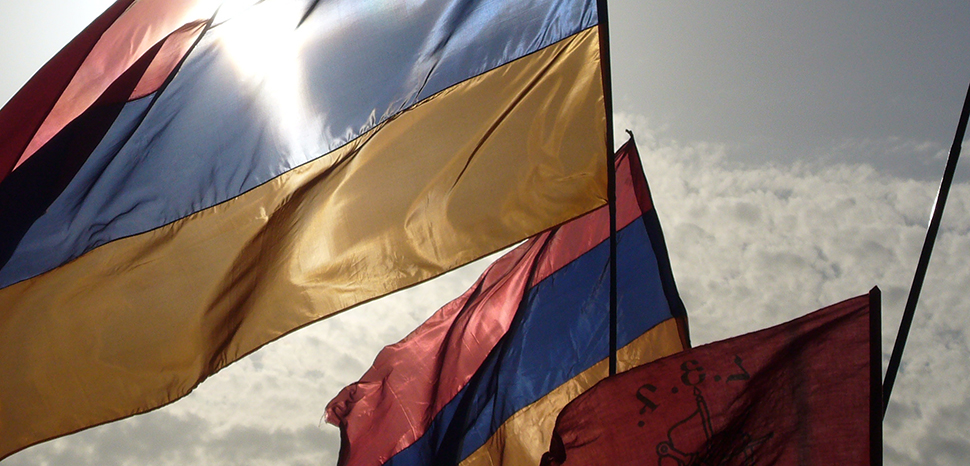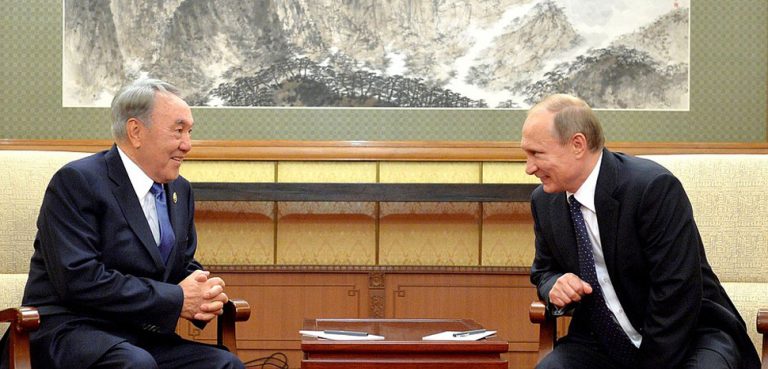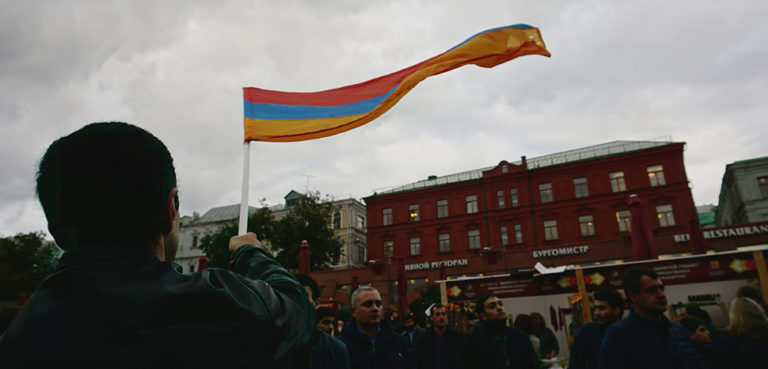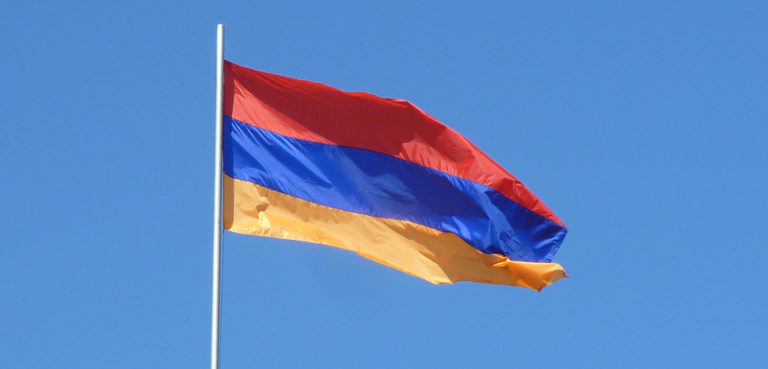Euphoria in Washington and Brussels about Armenia’s reorientation towards the West should be welcomed. Armenia attended the CIS (Commonwealth of Independent States) heads of state and Eurasian Economic Union meetings in Moscow on December 26. Armenia will chair the Eurasian Economic Union in 2024.
At the same time, euphoria is premature; to reach the West, Armenia must first leave the east which would be only possible if Russia was militarily defeated by Ukraine. As witnessed by Russia’s invasion of Georgia in 2008 and Ukraine last year, the Kremlin is not a supporter of ‘Brexits’ from its Eurasian sphere of influence.
History and geography constrain a country’s foreign policy and geopolitical orientation. And no more so than in the case of Armenia, which lies in the South Caucasus neighbouring Azerbaijan and Turkey. Armenia has no common border with its traditional Russian ally.
Armenia has aligned with Russia since becoming an independent state following the disintegration of the USSR. A brutal war in 1988-1992 led to Turkey closing Armenia’s western border in 1993 while its eastern border with Azerbaijan lay through occupied territory. After winning the First Karabakh War, Armenia occupied a fifth of Azerbaijani territory which included the symbolically important Karabakh region.
In May 1992, with the war just over, Armenia, Russia, and four Central Asian states – all former Soviet republics – signed the Tashkent Treaty. A year later Georgia, Azerbaijan, and Uzbekistan signed as well but they did not renew their participation in 1999, opting instead to align with Ukraine and Moldova in the pro-Western GUUAM (named after the first letter of its five members) group.
A decade later the original six members of the Tashkent Treaty became the CSTO (Collective Security Treaty Organisation). Although promoted by Russia as a Eurasian response to NATO this was a misnomer as NATO did not launch its first enlargement in the post-communist era until seven years later. Since then, NATO has enlarged on five further occasions while the CSTO has remained static.
CSTO members joined for diametrically different reasons. Belarus is a Russian satellite state and, like Russia, is xenophobically anti-Western. Four Central Asian states do not feel threatened by their neighbours and have looked to the CSTO to defend their regimes. Armenia built security partnerships with Russia and Iran to counter Turkey and Azerbaijan with whom it had poor relations and occupied territory of Azerbaijan.
Armenia’s pro-Russian security policy was deepened by bilateral military relationships with Russia signed in August 1992 and March 1995. Russia has two military bases in Gyumri and at Yerevan airport. Armenian officers train at Russian military academies and most of Armenia’s military equipment is Russian. Prior to Russia’s invasion of Ukraine there were rumoured to be plans to expand the number of Russian bases in Armenia. In February 2021, Armenian Defence Minister Vagharshak Harutyunyan raised the possibility of ‘redeploying some military formation of the [102nd] Russian base to the eastern part of Armenia.’ The possible location was the Vardenis region, southeast of Lake Sevan.
In August 2010, Armenian President Serzh Sargsyan and Russian President Dmitry Medvedev signed an agreement extending these Russian military bases until 2044. Serj Sargsyan and Robert Kocherian, who have played musical chairs with the positions of president and prime minister and who were dubbed the ‘Karabakh clan,’ are solidly pro-Russian in their foreign policy orientation.
Russia’s military involvement in Armenia goes even deeper.
Uniquely in the former USSR, Armenia’s borders are controlled by Russian border guard troops based on a treaty signed in September 1992. Russian border guard troops are based in Gyumri, Armavir, Artashat, Meghri and at Zvartnots airport. Russia’s border guard troops are under the control of the FSB, Russia’s Federal Security Service whose responsibility is internal Russian security but also stretches to cover the entire former USSR. In the USSR, the border guards came under the control of the KGB.
After the ceasefire following the 2020 Second Karabakh War, Russia expanded the presence of FSB border guard troops to five locations in Armenia, including two on the border with Nakhichevan, two on the border with Iran, and one in Tegh.
Russia’s military control of Armenia goes even further. In 2016, Armenia ratified an agreement with Russia to create a joint air-defence system which includes the entirety of Russia’s Air Force’s capabilities, including reconnaissance and surveillance, fighter jets and bomber planes.
On the economic front, Russia expanded its control over Armenia stealthily over the course of the last three decades. Armenia’s gas, and nuclear power sectors are controlled by Russia. Nearly as many Armenians live and work in Russia as do in Armenia, sending home remittances that are important for the government budget.
The EU included Armenia alongside five other Soviet republics, in the Eastern Partnership unveiled in 2010. The Kremlin viewed the Eastern Partnership as a threat to its Eurasian sphere of influence and created the CIS Customs Union as its response. After coming back as Russian president in 2012, Russian President Vladimir Putin applied pressure on Ukraine and Armenia to not sign Association Agreements with the EU. In 2013, Ukrainians rebelled against President Viktor Yanukovych’s withdrawal from the Association Agreement while Armenians accepted President Sargsyan’s decision to do so. Armenia joined the Eurasian Economic Union, as the CIS Customs Union had been renamed.
Nikol Pashinyan came to power in 2018 following a popular revolt against corruption and undemocratic practices undertaken by the ‘Karabakh clan’ which dominated Armenian politics since the early 1990s. Pashinyan has no love for the CSTO because it failed to intervene in the 2020 Second Karabakh War. Russia claimed there was no military action on Armenian territory and the CSTO did not intervene because the war was fought on territory internationally recognised as Azerbaijani. Pashinyan also condemned Russian peacekeeping forces for not intervening on Armenia’s side during the short-lived Azerbaijani retaking of Karabakh earlier this year.
Pashinyan has boycotted recent CSTO summit showing how Armenia has become a de facto passive member. Nevertheless, despite the prime minister’s criticism, Armenian government officials have been at pains to say that there are no plans to withdraw from the CSTO or close Russian military bases. The only discernible difference has been Armenia’s interest in balancing countries with whom it conducts military cooperation. Nevertheless, this has been on a small scale, the Eagle Partner peacekeeping training exercise held in Armenia in September included only 85 U.S. and 175 Armenian soldiers.
Pashinyan and other Armenian officials have never raised the question of withdrawal from the Eurasian Economic Union. In 2016, the UK held a Brexit referendum using article 50 of the Treaty on the European Union; the charter of the Eurasian Economic Union does not include such a mechanism.
Countries can only be in one customs union. In 2014, Ukraine signed the Association Agreement and is part of the EU customs union. Armenia cannot re-join the path to signing an Association Agreement until it leaves the customs zone of the Eurasian Economic Union which it joined in January 2015.
Washington and Brussels should encourage Armenia to pursue a more balanced multi-vector foreign policy. This may gradually reduce Russia’s influence in Armenia. With the decline of the ‘Karabakh clan’ following the formerly occupied territories returning to Azerbaijani sovereignty, Russia has lost its main source of influence in Armenia.
While Pashinyan’s heart would like to steer Armenia towards Europe, his head understands realities on the ground. There is no easy mechanism for Armenia to withdraw from the CSTO or Eurasian Economic Union – even if the Kremlin were to accept this step, which is unlikely. It is also unclear what would be the Kremlin’s response if Armenia unilaterally abrogated Russian military bases.
Ironically, Armenia’s best chance of moving west is if the east is militarily defeated by Ukraine. As Russian history has shown in the mid nineteenth and early twentieth centuries, Russian leaders have traditionally not survived the domestic turmoil brought about by military failures.
Taras Kuzio is a professor of political science at the National University of Kyiv Mohyla Academy and an associate research fellow at the Henry Jackson Society. He is the author of Fascism and Genocide: Russia’s War Against Ukrainians.
The views expressed in this article belong to the authors alone and do not necessarily reflect those of Geopoliticalmonitor.com.




